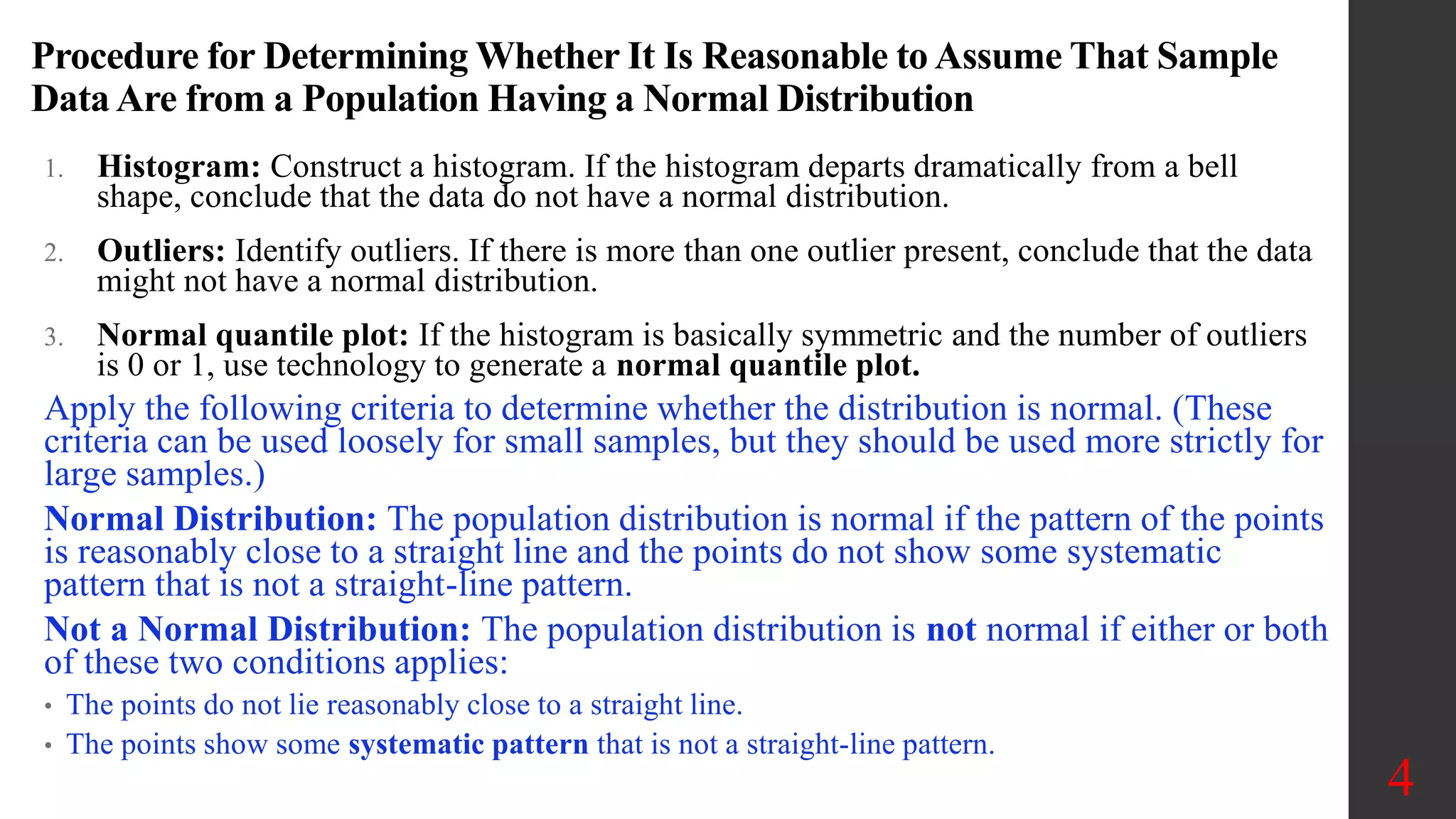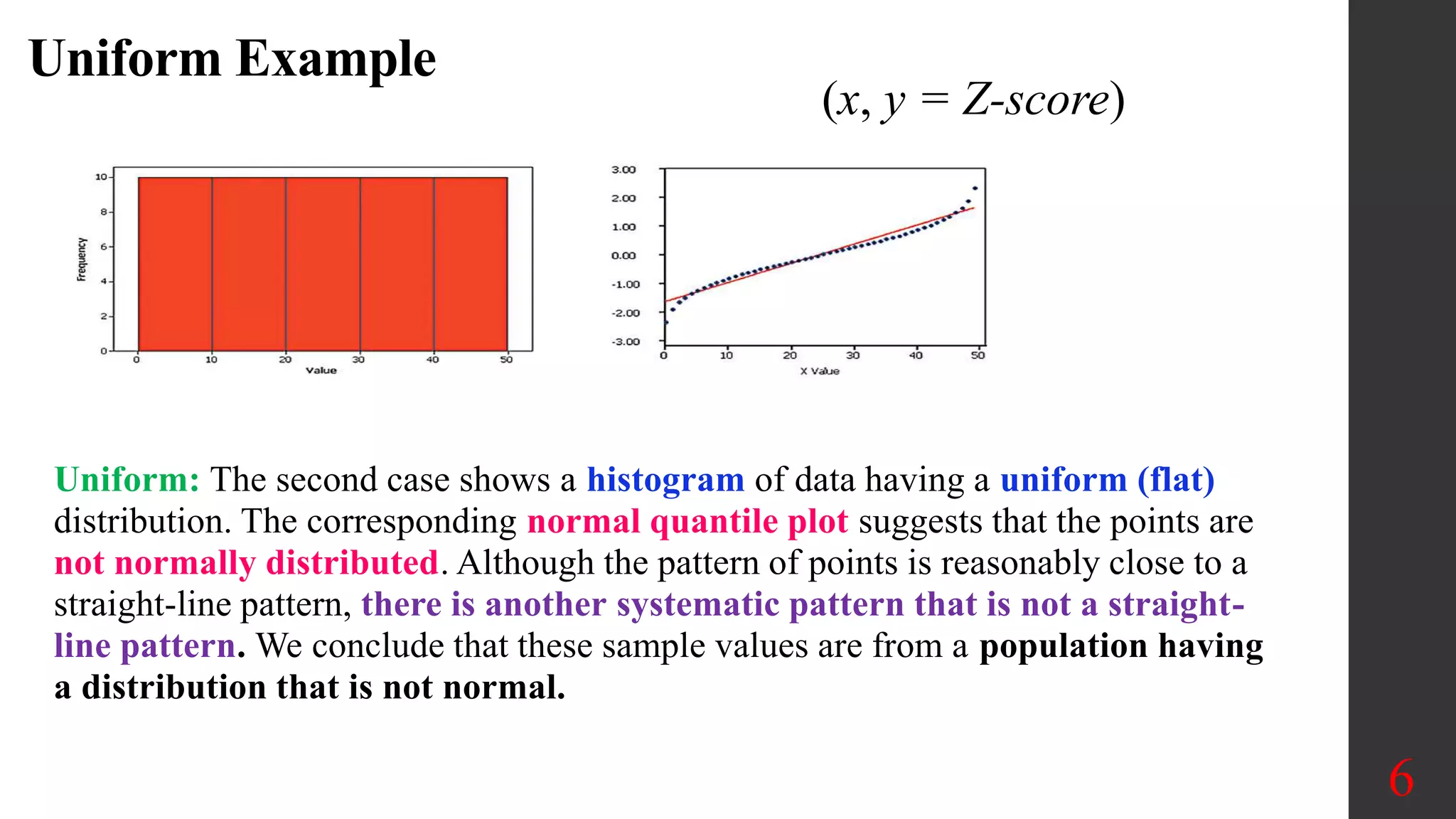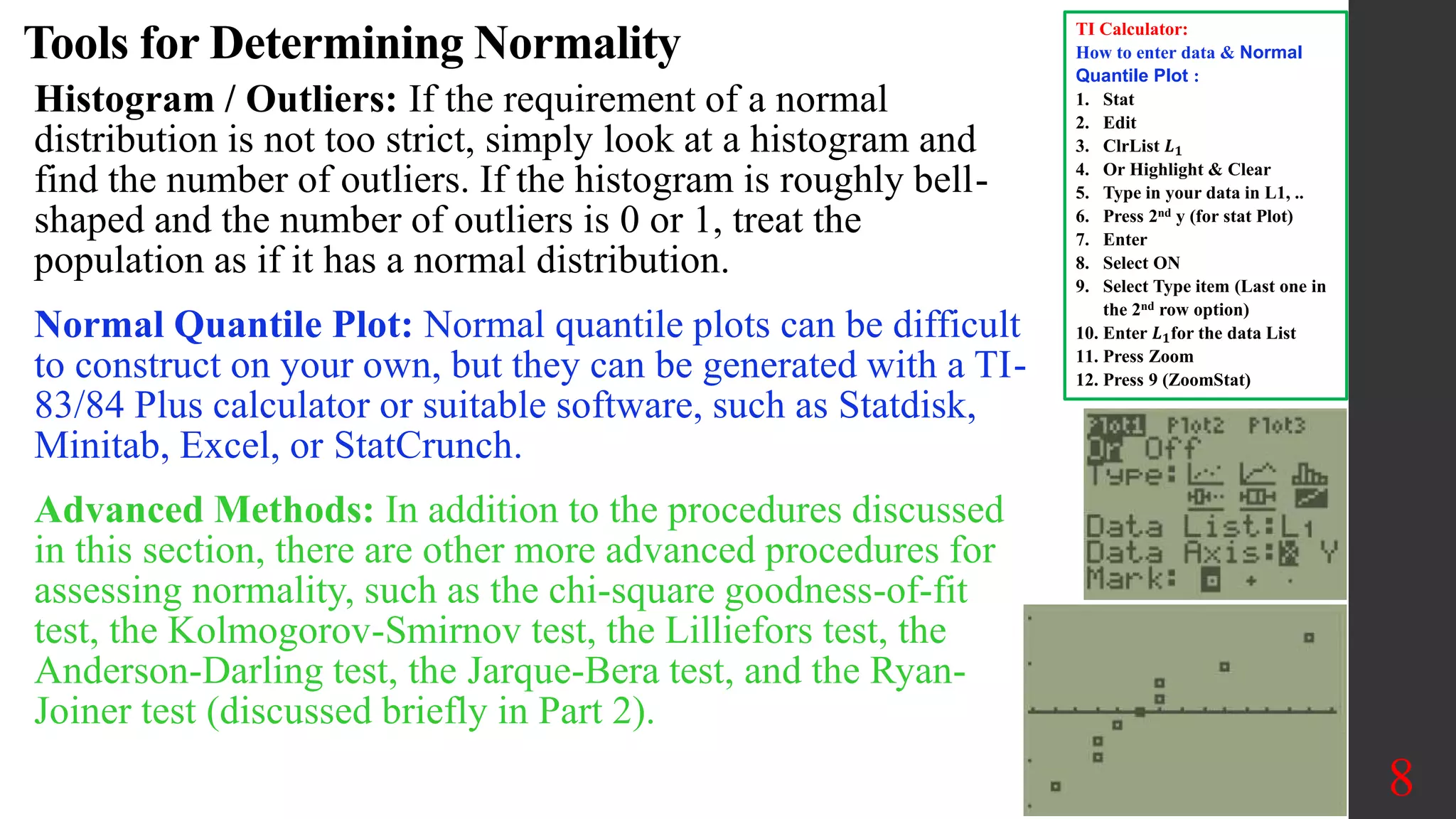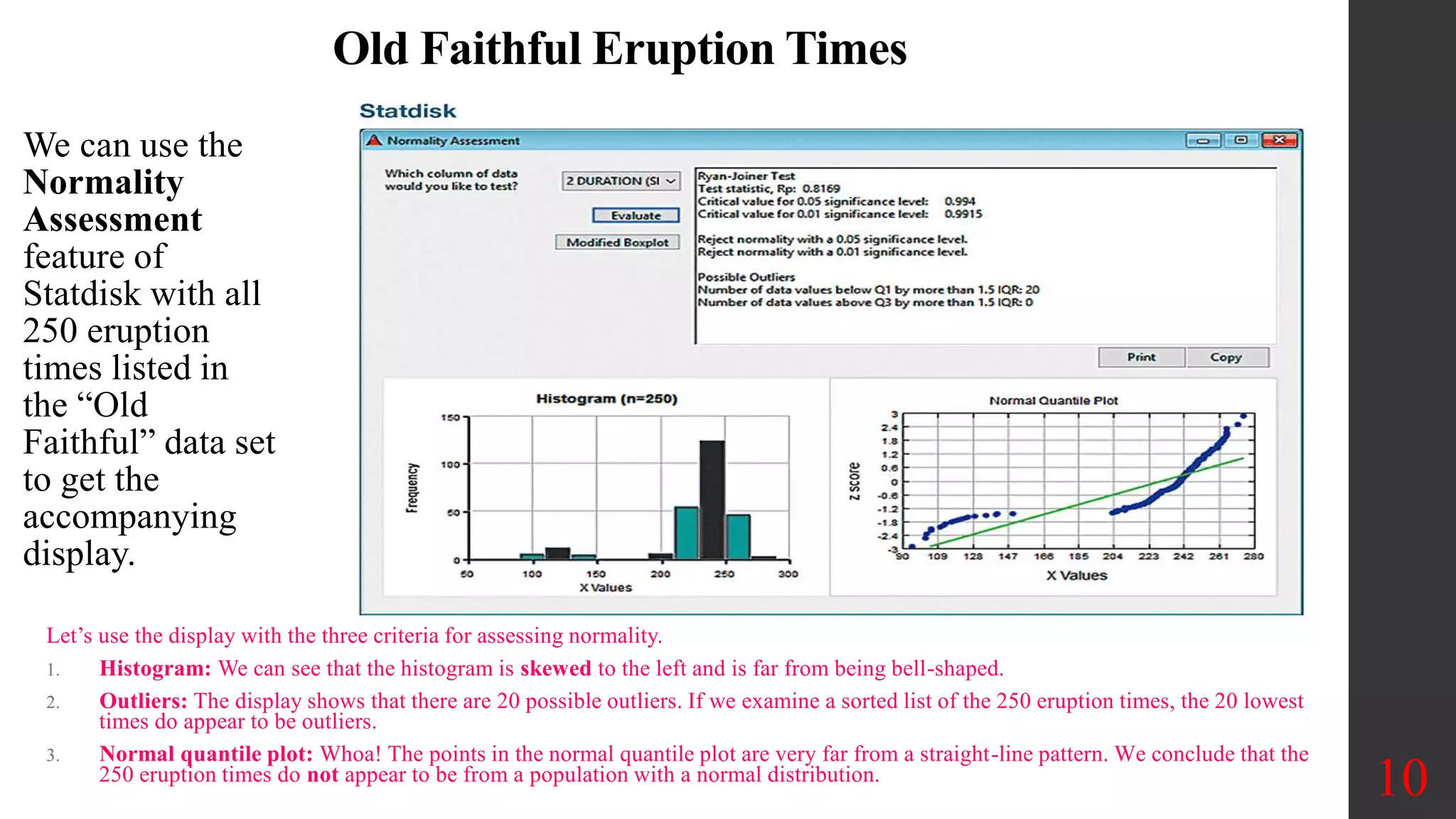Chapter 6 focuses on the normal probability distribution, emphasizing the assessment of normality through various methods such as histograms, outlier identification, and normal quantile plots. It outlines the procedures for determining whether data can be assumed to follow a normal distribution, and provides examples of how to utilize technology for analysis. Additionally, the chapter discusses advanced tests for normality and includes practical applications for real-world data assessment.












